GNSS antenna height measurement
This topic describes how to measure the height of an antenna mounted on a range pole or tripod when the Measured to field is set to Bottom of antenna or Bottom of antenna mount, or Bottom of quick release.
In a GNSS survey the software automatically adds the appropriate offset value for the Measurement method you select when you enter the Antenna height value. You can also use the offset values shown as a reference if your local regulations require you to manually calculate the APC height as a check for fieldbook purposes.
When measuring or staking out points using IMU tilt compensation, make very sure the entered antenna height and measurement method is correct. Alignment reliability and pole tip position reliability, especially during movement of the antenna while the pole tip is stationary, relies completely on the antenna height being correct. Residual error in horizontal position caused by antenna motion while measuring when the pole tip is stationary cannot be removed by changing the antenna height after measuring the point.
For the offsets automatically applied by the software for each measurement method, refer to the following diagram where:
(1) is the receiver
(2) is the bottom of the antenna mount
(3) is the bottom of the quick release
(4) is the uncorrected height measured from the pole tip to the bottom of the quick release
(5) is the corrected height to the APC from the bottom of the pole
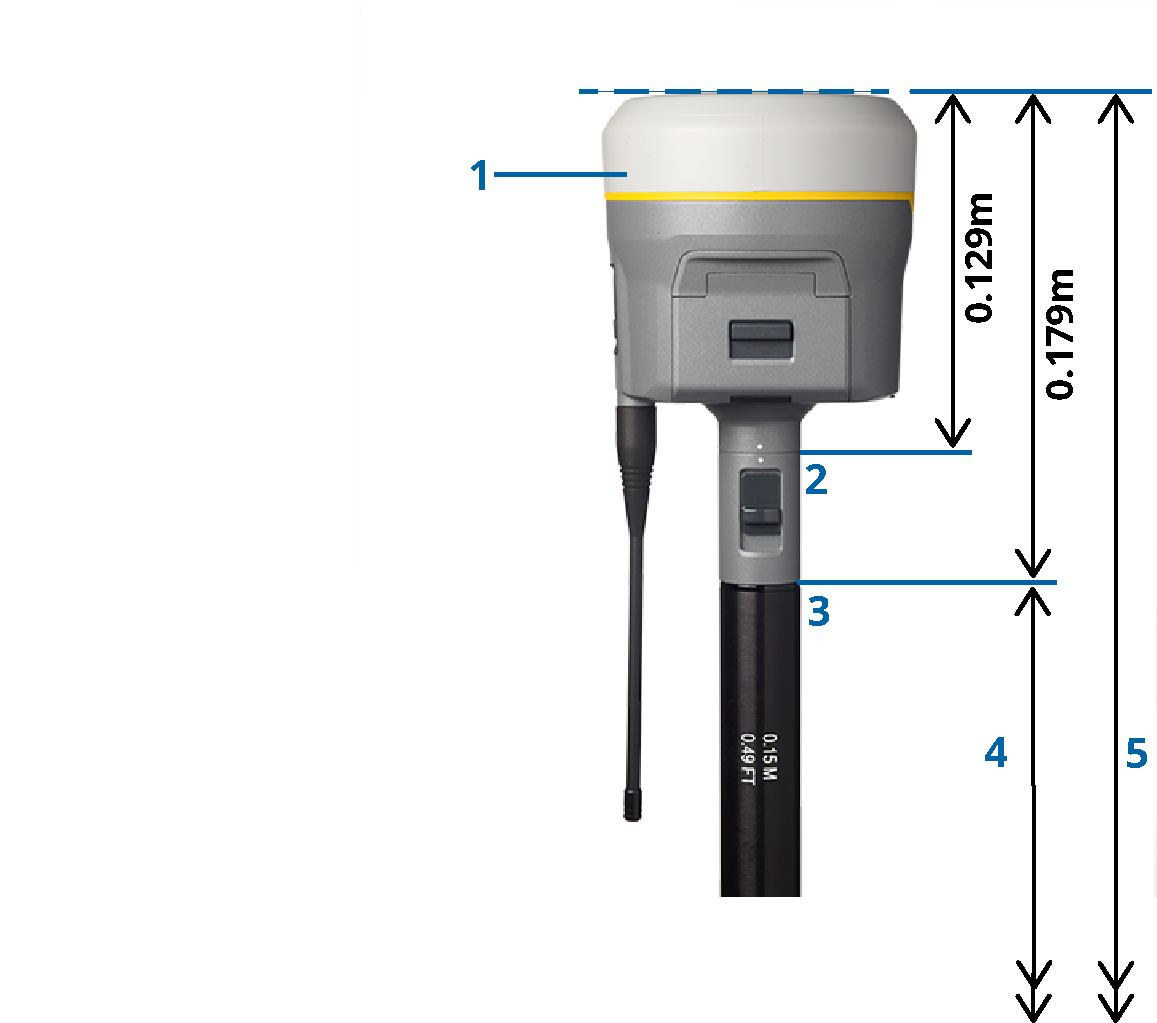
The following describes how to measure the height of a receiver using the lever on the receiver extension, when the receiver is mounted on a tripod.
For the offsets automatically applied by the software for each measurement method, refer to the following diagram where:
(1) is the receiver
(2) is the lever of the extension
(3) is the corrected height to the APC from the ground mark
(4) is the uncorrected height, measured using a tape or measuring rod from the ground mark to the tip of the lever (note this is a slope measurement)
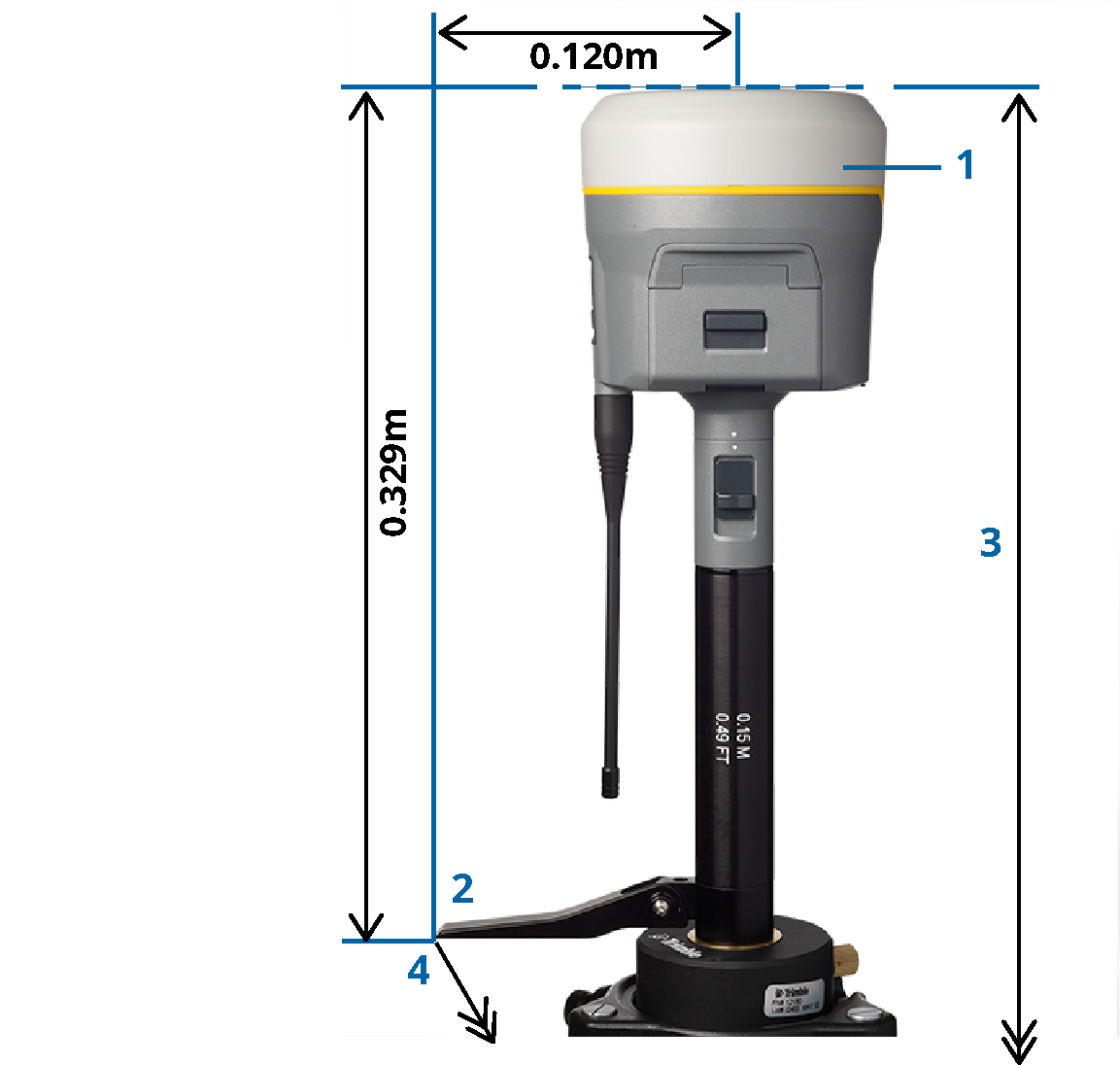
For the offsets automatically applied by the software for each measurement method, refer to the following diagram where:
(1) is the receiver
(2) is the bottom of the antenna mount
(3) is the bottom of the quick release
(4) is the uncorrected height measured from the pole tip to the bottom of the quick release
(5) is the corrected height to the APC from the bottom of the pole
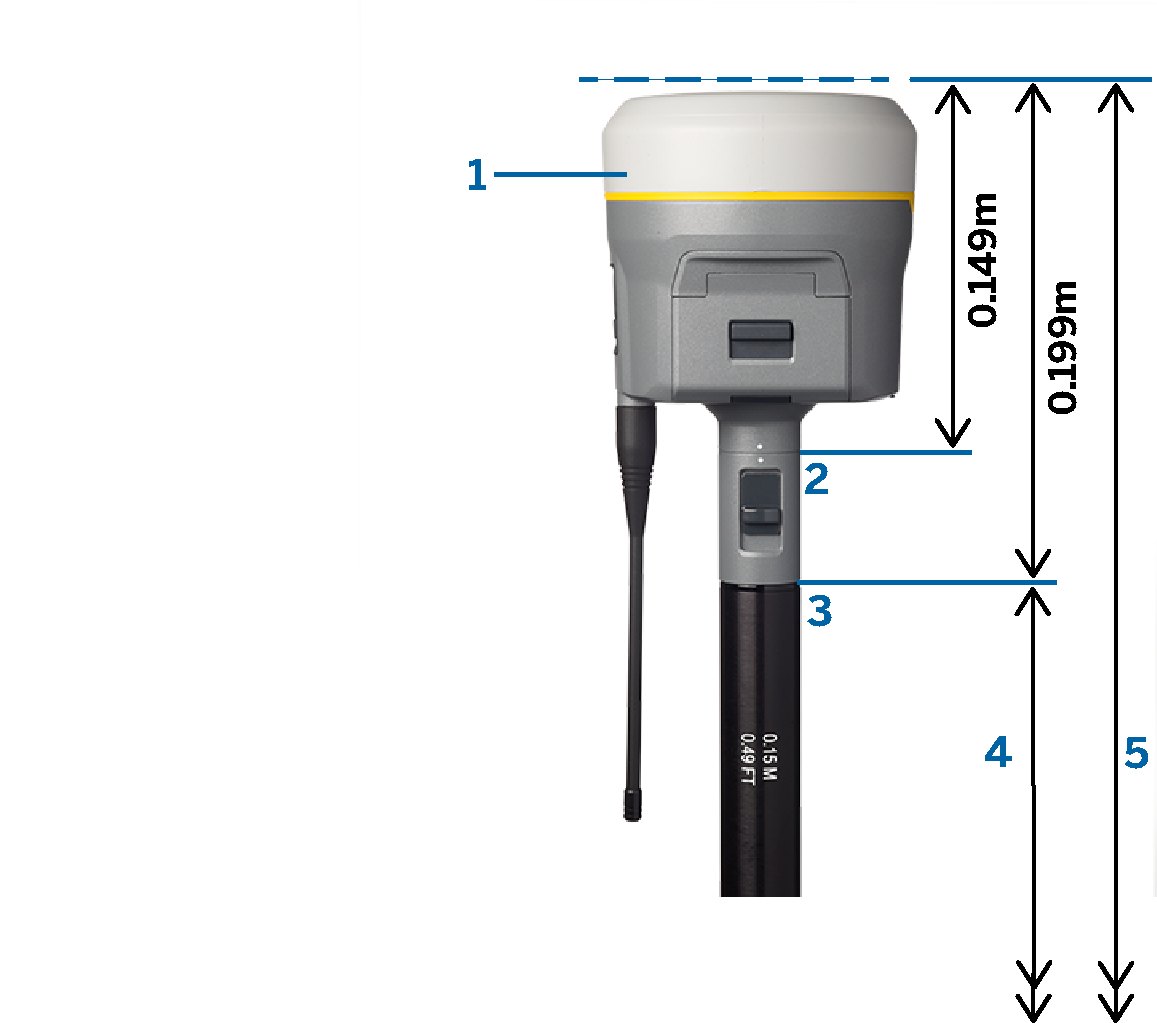
The following describes how to measure the height of a receiver using the lever on the receiver extension, when the receiver is mounted on a tripod.
For the offsets automatically applied by the software for each measurement method, refer to the following diagram where:
(1) is the receiver
(2) is the lever of the extension
(3) is the corrected height to the APC from the ground mark
(4) is the uncorrected height, measured using a tape or measuring rod from the ground mark to the tip of the lever (note this is a slope measurement)
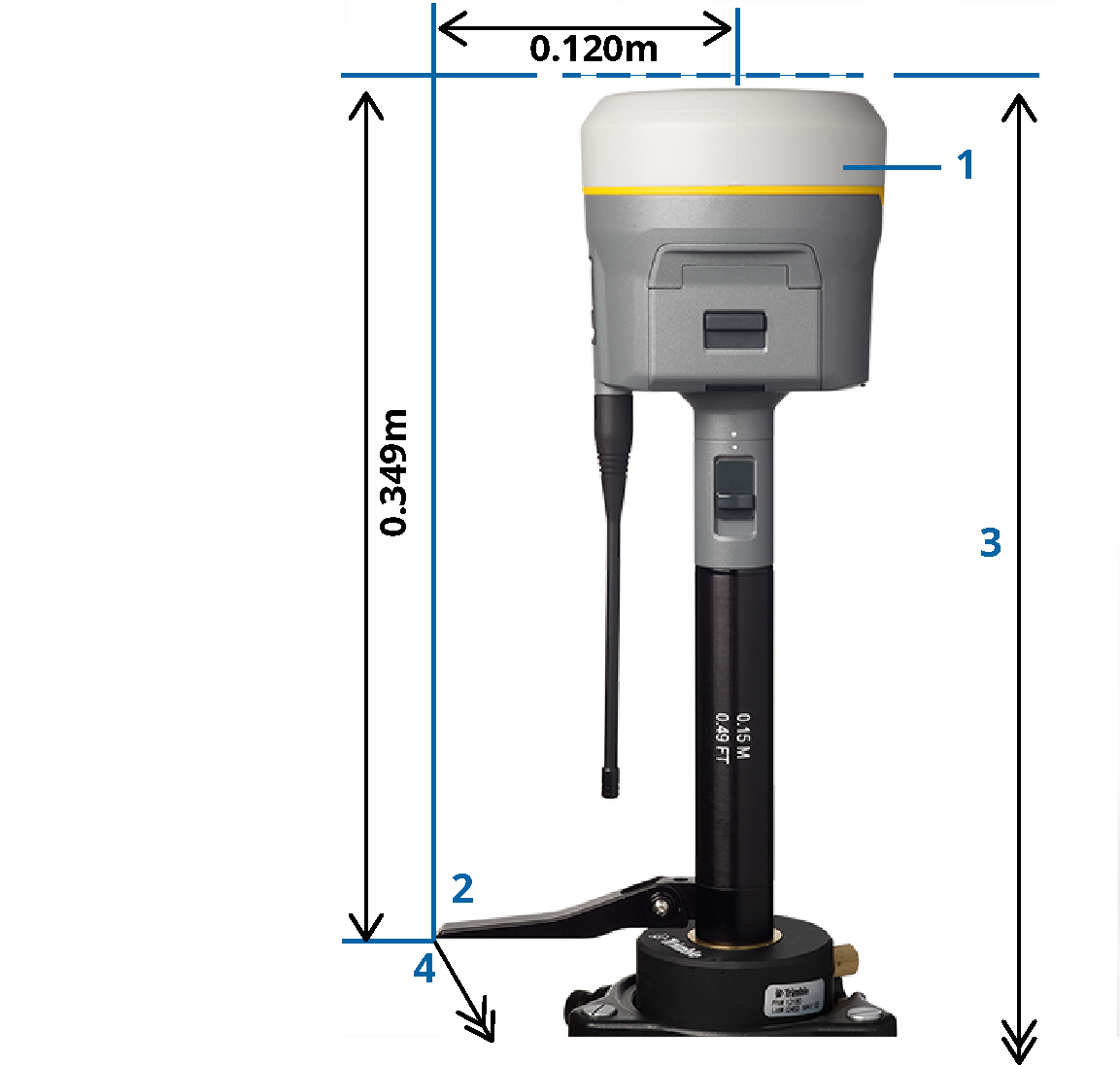
When measuring or staking out points using IMU tilt compensation, make very sure the entered antenna height and measurement method is correct. Alignment reliability and pole tip position reliability, especially during movement of the antenna while the pole tip is stationary, relies completely on the antenna height being correct. Residual error in horizontal position caused by antenna motion while measuring when the pole tip is stationary cannot be removed by changing the antenna height after measuring the point.
For the offsets automatically applied by the software for each measurement method, refer to the following diagram where:
(1) is the receiver
(2) is the bottom of the antenna mount
(3) is the uncorrected height measured from the pole tip to the bottom of the antenna mount
(4) is the corrected height to the APC from the bottom of the pole
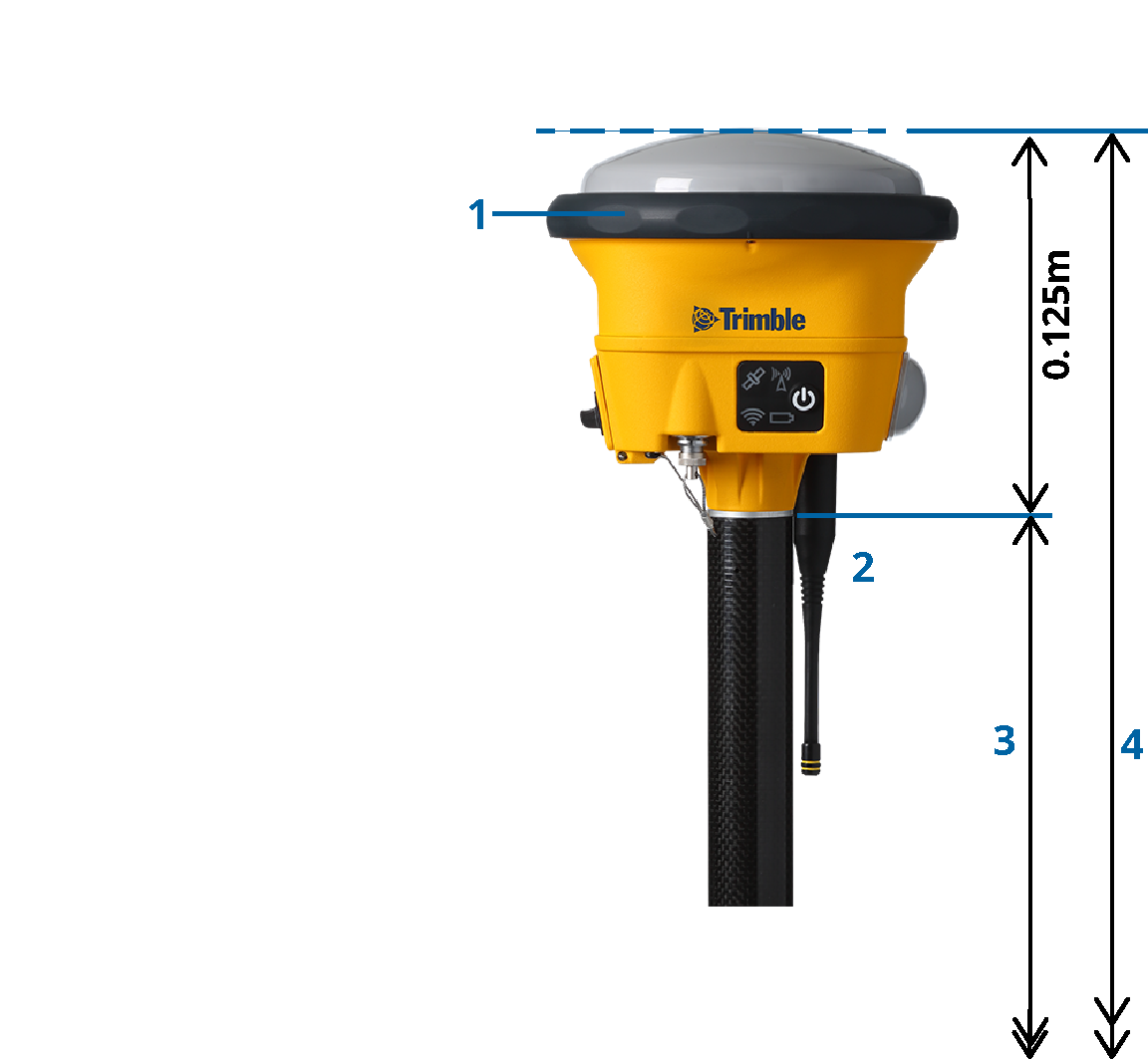
The following describes how to measure the height of a receiver using the lever on the receiver extension, when the receiver is mounted on a tripod.
For the offsets automatically applied by the software for each measurement method, refer to the following diagram where:
(1) is the receiver
(2) is the lever of the extension
(3) is the corrected height to the APC from the ground mark
(4) is the uncorrected height, measured using a tape or measuring rod from the ground mark to the tip of the lever (note this is a slope measurement)
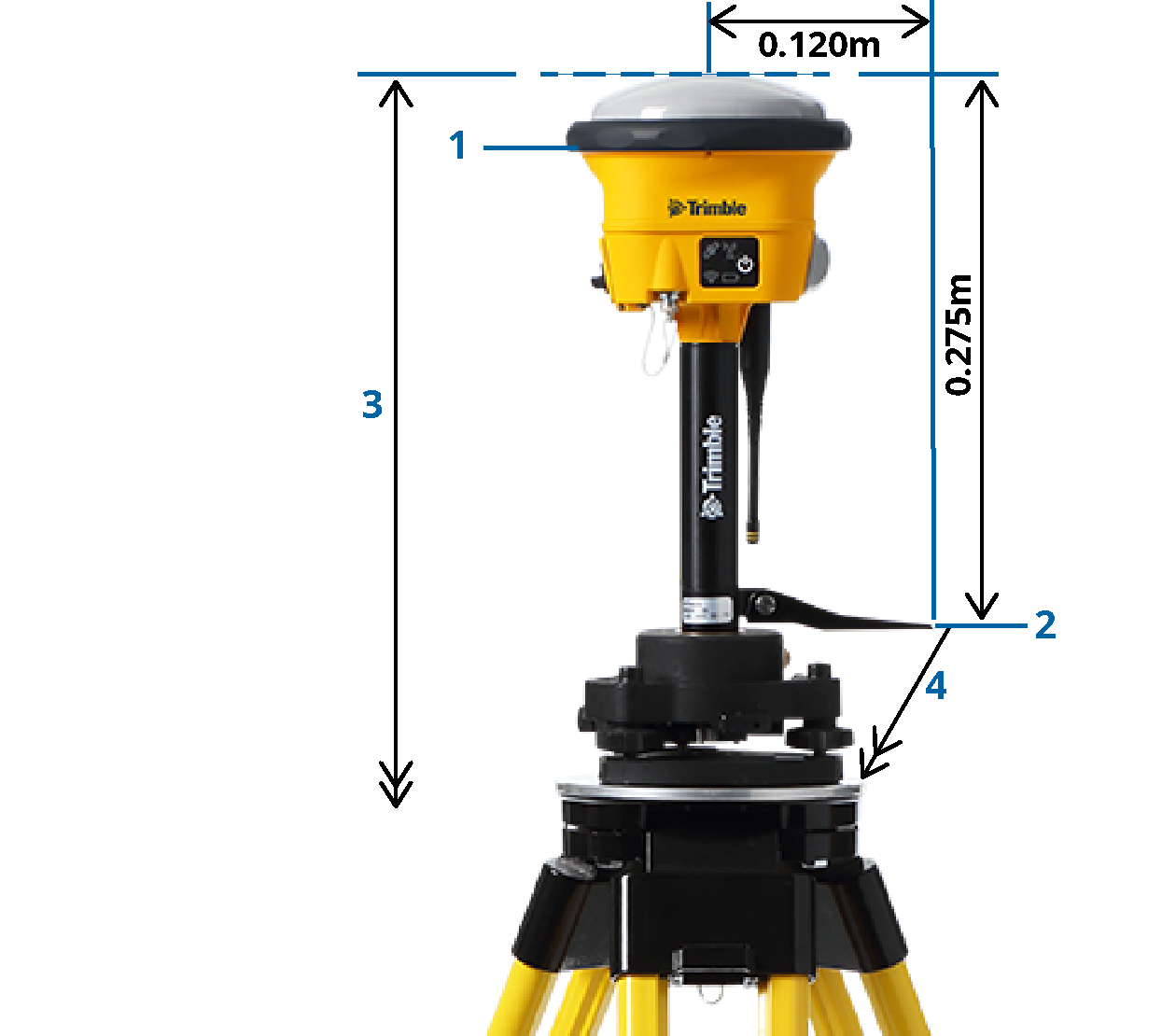
For the offsets automatically applied by the software for each measurement method, refer to the following diagram where:
(1) is the receiver mounted on a pole
(2) is the bottom of the antenna mount
(3) is the uncorrected height measured from the pole tip to the bottom of the antenna mount
(4) is the corrected height to the APC from the bottom of the pole
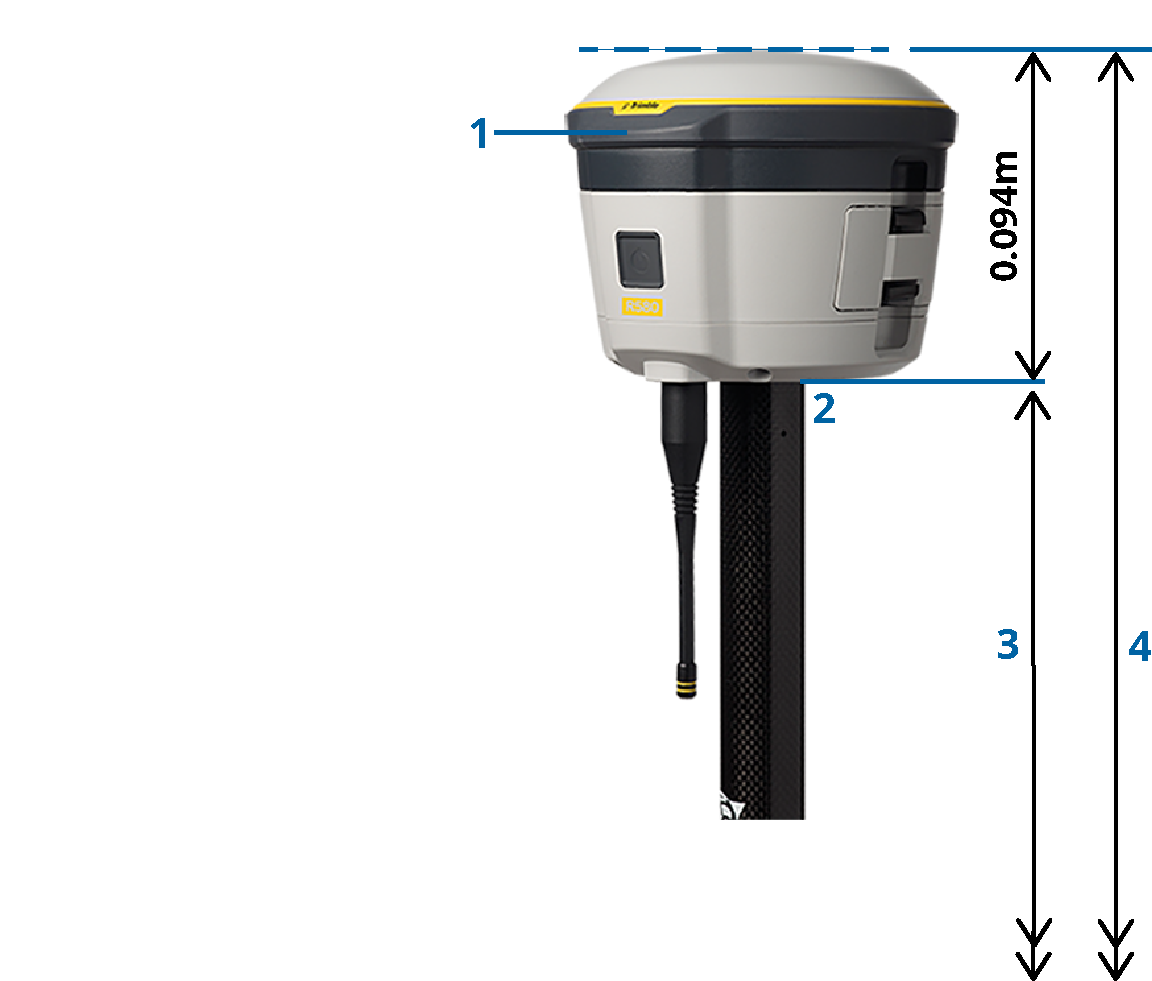
This section covers other Trimble integrated GNSS receivers not mentioned above, including the Trimble R8s, R8, R6, and R4 receiver.
For the offsets automatically applied by the software for each measurement method, refer to the following diagram where:
(1) is the receiver mounted on a pole
(2) is the bottom of the antenna mount
(3) is the uncorrected height measured from the pole tip to the bottom of the antenna mount
(4) is the corrected height to the APC from the bottom of the pole
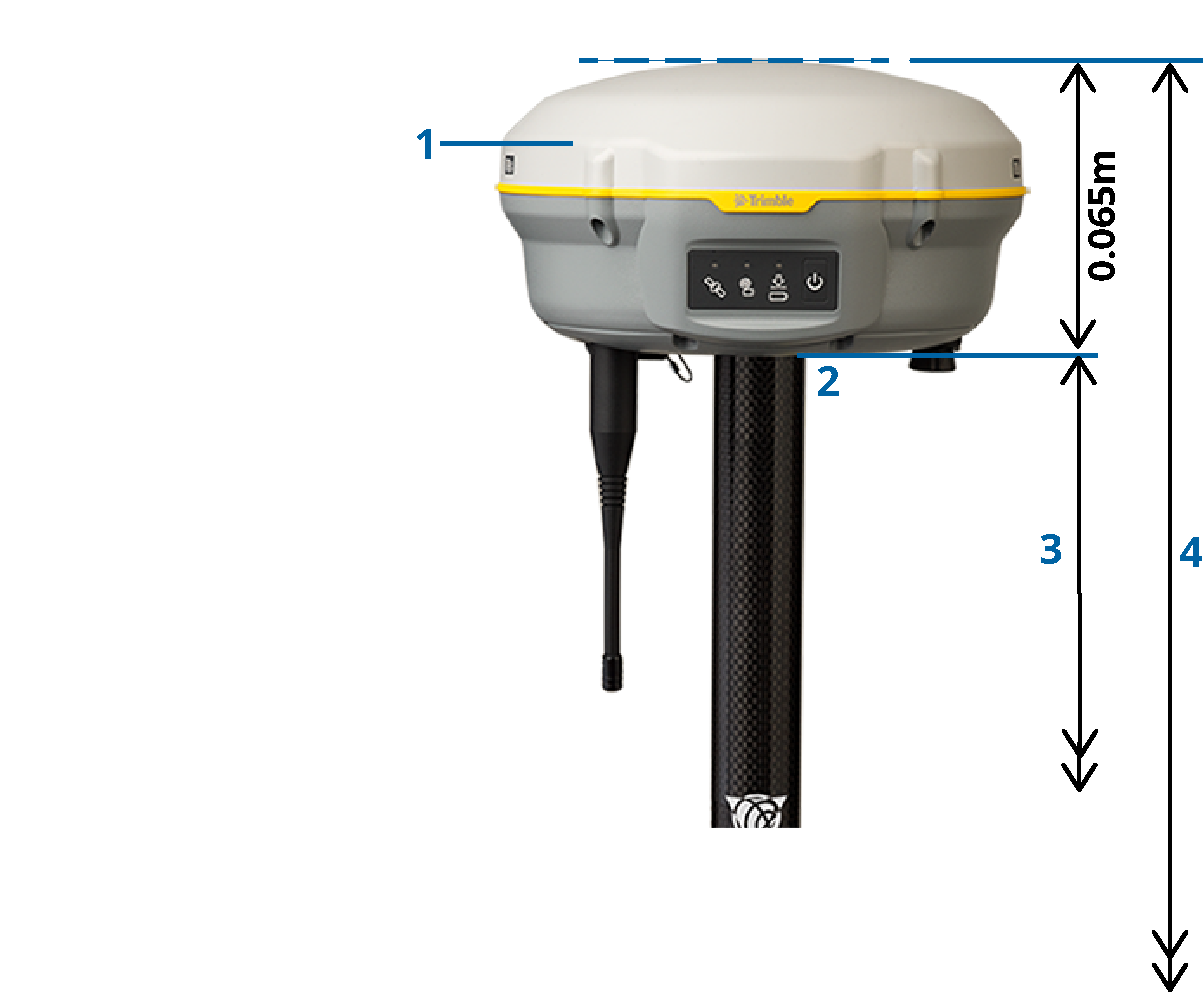
If this receiver is mounted on a tripod, measure the height from the ground mark to the center of the yellow bumper between the gray base and the white top of the antenna, and select Center of bumper in the Measured to field. Note this is a slope measurement.
For the offsets automatically applied by the software, refer to the following diagram where:
(1) is the Zephyr 3 Rover antenna
(2) is the bottom of the antenna mount
(3) is the uncorrected height measured from the pole tip to the bottom of the antenna
(4) is the corrected height to APC
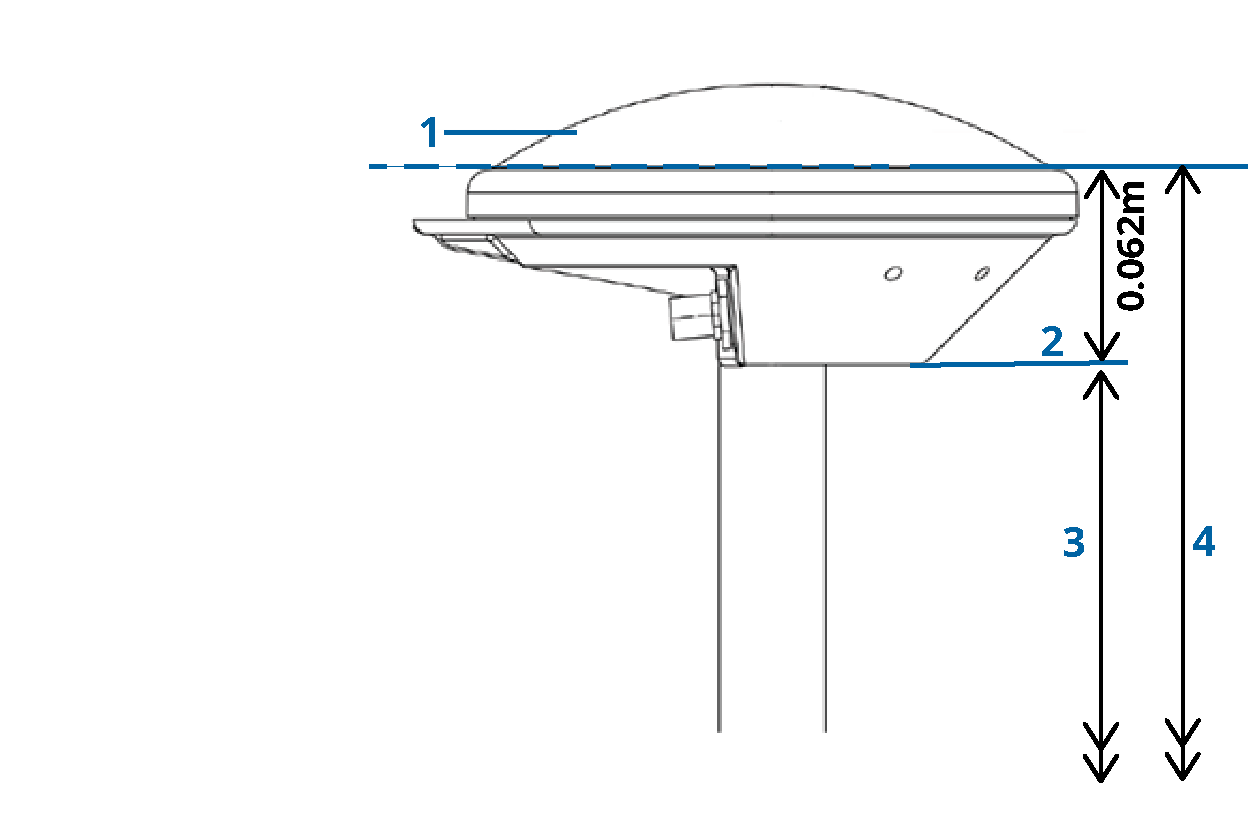
If this antenna is mounted on a tripod, measure the height from the ground mark to the top of the notch protruding from the side of the antenna.
If the Zephyr 3 Base antenna is mounted on a tripod, measure the height to the bottom of the notch on the side of the antenna.
For the Bottom of notch measurement method when the antenna is on a tripod, refer to the following diagram where:
(1) is the Zephyr 3 Base antenna
(2) notch on the perimeter of the groundplane
(3) is the uncorrected height from the ground mark to the bottom (underside) of the notch
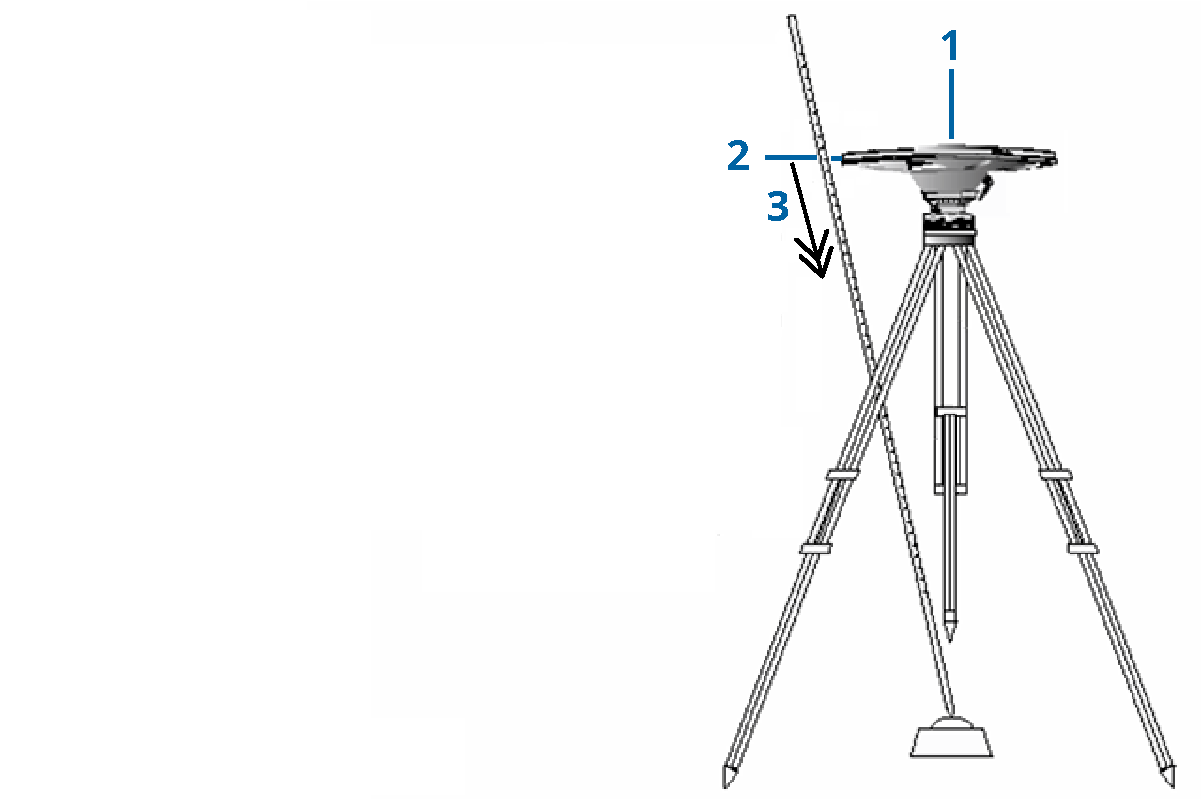
Measure the height to three different underside notches around the perimeter of the groundplane. Then record the average as the uncorrected antenna height.